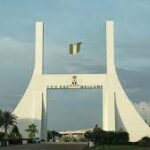It became Gidan Makama when the emir appointed Rumfa as the Makaman Kano. Rumfa lived in the house while he was Makama and also when he eventually became the emir of Kano. He was living in the house when he decided to build the present emir’s palace, and he relocated to the new palace on completion.
However, his relocation did not change the position of the house as it continued to serve as a residential place for all subsequent Makaman Kano. It served as their resort whenever they were in the city, and most especially when they came to Kano city for the durbar during the Sallah.
Gidan Makama had also served as the abode of the colonial masters. When the British conquered Kano in 1903, the architectural beauty of Gidan Makama attracted their attention and they decided to have it as the residence of the colonial officers. When the then chief commissioner of Northern Nigeria Frederick Lugard (later Lord Lugard) came to Kano, he also lived in Gidan Makama.
How it became a museum
A senior technical officer in the education department of the Gidan Makama Museum, Mr Dominic Yerima, while taking our correspondent round the house, described how Gidan Makama became a museum. He said Lord Lugard had in a way played a role in converting it into a museum. “Because Gidan Makama is such a very big edifice with beautiful architectural design, the then colonial governor Lord Lugard decided to split the house into three. One part of it was converted into Gidan Makama Primary School, the other part remains as residential area for the Makaman Kano, and the last part was made a museum in 1953,” he said.
What Gidan Makama Museum showcases
As one enters the gate that leads to the museum, the sight of some gigantic pots on the outer premises of the museum welcomes the visitor. The pots are so big that a grown up person can enter into one and sit comfortably. The pots are said to have been excavated at the Kofar Kabuga, one of the gates around Kano city wall (ganuwa) through which the colonial masters entered and conquered Kano. There are various explanations as to the use of these pots, but a popular tradition states that they were buried along the city-walls by Kano kings for protection in the olden days.
Other exhibits at the entrance of the museum are two cannons which, according to Yerima, were abandoned by the colonial masters when they conquered Kano. They are believed to have been part of the arsenal with which the British conquered Kano in 1903. One is for long range shots while the other is for short range shots. Four of such cannons were discovered at a military barrack at Bompai area of the city but only two were deposited at the museum.
The Gidan Makama building is partitioned into nine galleries (each called zaure), with each gallery showcasing a particular aspect of the ancient Kanawa (people of Kano) life. Zaure is the main entrance of a typical Hausa building. Explaining what is exhibited in the first gallery, Yerima said they are items related to building materials of the ancient Kano. It is with these materials that the Gidan Makama was built. They include makuba, a kind of soil additive used as cement and paint by the ancient Kano people. There is azara, palm trees used for thatching roofs, and some other materials used for building. At the other side of the gallery is the olden day’s gate of Kofar Waika (one of the Kano City Gates). It is a very big iron gate, and attached to it is a metal slate with some Arabic inscriptions believed to be a charm for protection.
As one leaves the first gallery, on his way to the second one, there stand other big iron gates including the Kofar Kabuga gate through which the colonialists got into the city and conquered it in 1903. Also on display in this gallery is the map showing the Kano city walls, its original number and its expansion to the present 19 gates.
The next gallery depicts the history of Kano city from its pagan period to the present day. A shrine of an idol called Tsumburbura could be seen on top of Dala hill with a picture of worshippers under the hill. The idol was under the care of the chief priest called Barbushe and under him are several lesser priests. It also gives the story of the earlier invaders of Kano land led by Bagauda, and how they conquered and imposed themselves on the ancient Kano people.
On leaving this gallery, one is ushered into another where an illustration of the history of Kano in the 19th century is showcased. The structure of the Habe (non-Fulani) dynasty and the Fulani dynasty is shown. Next to this gallery is a place where the occupation of ancient Kano people is depicted. Exhibits of farm implements and hunting instruments are shown. Explaining the types of crops grown at that time, the technical officer said crops such as millet, sorghum, cowpea and groundnut were cultivated.
The samples of war instruments such as iron and leather shield, sword and gun are exhibited in the next gallery. Yerima said the iron-made shield was donated to the emir of Kano by a German envoy. Next to it is the gallery showcasing the royal regalia. Here the royal shoes, staff, worn fan and turban are shown. Exhibits of musical instruments are showcased in the next gallery for fun seekers.
Immediately after this gallery, the pictures of Nigerian nationalists such as Nnamdi Azikiwe, Sardauna Ahmadu Bello, Tafawa Balewa, among others, are showcased, and alongside these are the pictures of some of the colonial masters in the next gallery.
Darul Islam (House of Islam) is the next gallery. As the name suggests, the gallery is all about the Islamic heritage of the Kanawa. On display is the information about the pillars of Islam, astrology, a copy of a hand-written Qur’an, information about the Maliki school of thought, portrait of a Qur’anic teacher on a leather mat with the slate and ink bottle also displayed to show a typical Qur’anic school.
From Darul Islam to the next gallery, there is an open space where activities for fun are performed. Durbar gallery is where pictures of Sallah durbar are shown. The pictures of the emir with different title holders on horsebacks are exhibited. Durbar, as it is called, is a four-day colourful event of spectacular parade of dancers and musical performers etc and display of horsemanship to mark the end of Ramadan fasting celebration (for eid-el-fitr) and the eid-el-kabir.
The last gallery in the Gidan Makama Museum is the bride’s room. This gallery is about traditional Hausa bride’s room. Exhibits in the room are tasa, a kind of bronze dish; taskira, a bowl made of palm leaves used for keeping cotton spinning items; tukurwa bed, made from palm trunk; calabashes, grinding stones and water containers, among others.
Activities at the Museum
Apart from the historical materials that are exhibited for people in the museum, different activities ranging from educational to economic are conducted. The museum is normally open from 9am to 5pm every day and typical of all museums, there are guides that conduct visitors round Gidan Makama Museum, explaining every bit of the exhibits to them.
The technical officer explained that educational activities such as quiz and debates are organized for secondary school students there. At the end of the event, prizes are given to the winners by the museum. In addition to that, there are organised visits for school children. This programme is provided to allow school children and their teachers to go on an excursion of the museum.
Another educational programme organised by the museum, according to Yerima, is the Saturday Art Club. The programme is organised for children to help develop their creativity. At the end of it, their art works are exhibited for people to see.
Yerima further noted that skills acquisition programmes are organised for youths free of charge. “Under this scheme, we do teach them tailoring, knitting, beads making and cookery. At the end of the training we give them certificates. Trainees are drawn from secondary school leavers across the state,” he said.
Their activities do not stop at the museum as disclosed by the education officer. They have outreach activities where they go to schools and other places to enlighten the populace about the importance of museums. “We use to go out to schools, markets, prisons and orphanages from time to time to enlighten them on the importance of visiting the museum,” said Yerima.
He added that the outreach activities are yielding fruits as more people are coming to visit the museum.
Visitors
The museum is visited by many people for varied reasons. While some go there to see the exhibits in the house, others go for cultural activities that are being organised. Children and women constitute the majority of this group. Though the house is open for the whole week, higher number of people visiting is recorded during Sallah festival.
Dearth of cultural materials
Some of the people interviewed expressed their dismay over what they see as the dearth of cultural materials in the museum. Malam Muhammad Isa, a visitor to the museum, said the house is below standard as so many aspects of the Hausa cultural heritage are lacking. “I’m disappointed with what I saw in the museum. So many things about the Hausa culture are missing. If you take the bride’s room, for example, there is no local box that is called adudu, no kitchen utensils such as the local tray made from straw called faifai and matankadi (sieve). There are no local spoons and many other items that were used by the ancient Hausa women in their homes,” he said.
He further noted that ancient Hausa costumes are also not shown, saying that only the royal regalia are being showcased. According to him, the museum should be handed over to Kano State Government to take care of it by stocking it with things related to the Hausa society of ancient time. “The museum being located in Kano should be allowed to remain under the state government,” he said. “It is the state government that knows the importance of the museum as it is dealing with the culture of the Hausa people. I cannot see the rationale behind making it a national monument under the Federal Government”.
Hidden items in the house
Sunday Trust learnt that there are other historical items of the old Kano society that are not showcased but stored. Such items include things to do with the pagan era of the Kano city. Explaining the reasons behind that, Yerima said it was put in store to avoid misconception by ignorant people. He said that with the increased awareness and knowledge, the house is thinking of changing its former position and make public those historical materials.
Another thing noticed about the house is the sign of dilapidation everywhere. The walls look worn out with cracks. Some of the galleries have collapsed and the library in the museum shows signs of decay. The glasses showcasing exhibits are also outdated. There is virtually no sign of standardization. The offices are poorly furnished and highly congested with staff.
The challenges
The education officer has listed some problems the museum is facing, with the main one being lack of adequate funding. He noted that the house is grossly underfunded, a situation that is making it difficult for them to move forward. “As you are aware, there is no organization that will not have its peculiar problem that is militating against its progress,” he said. “Here in this museum, and indeed in all the museums in Nigeria, our major problem is lack of funds. We don’t normally get enough funds to undertake renovation works in this house”.
He said both the structure and the galleries where exhibits are displayed need total renovation but due to the funding problem, they have not been able to do it. He added that ideally the structure is supposed to be renovated every year but it is now four years that it has not been renovated. He said some of the galleries were leaking so seriously during the last raining season that they feared the building could collapse.
Apart from dilapidation, the house has inadequate offices for the staff. He noted that “because the house was not made to serve as an office in the initial stage, there is not enough space to create more offices. The few ones we have are badly furnished. The same thing with the library. Before we used to have so many things in the library such as computers, TV satelite set video cameras and books, but now all these things are lacking”.
He maintained that the revenue they were generating from the gate fee is too small. “What we are generating here is not much because people are yet to understand the importance of the place. We charge N50 as the gate fee for adults and N30 for children, while for our foreign visitors we charge them N200.”
He said with the security problems now, the foreign visitors have stopped coming. “In previous years, we used to get up to 200 foreign visitors, most especially during Sallah but this year’s Sallah, not a single visitor was seen.”
According to him, Kano State Government is not assisting as is being done in some states, citing the example of Katsina State where the governor assisted in remodelling the museum to make it look like a world class museum.
Philanthropists too have not extended their assistance to the place, despite the advertisement the museum is making soliciting support from all and sundry.
The officers said if they can get support from both state government and the public, they have planned to raise the standard of the museum to that of a world class museum.
 Join Daily Trust WhatsApp Community For Quick Access To News and Happenings Around You.
Join Daily Trust WhatsApp Community For Quick Access To News and Happenings Around You.


